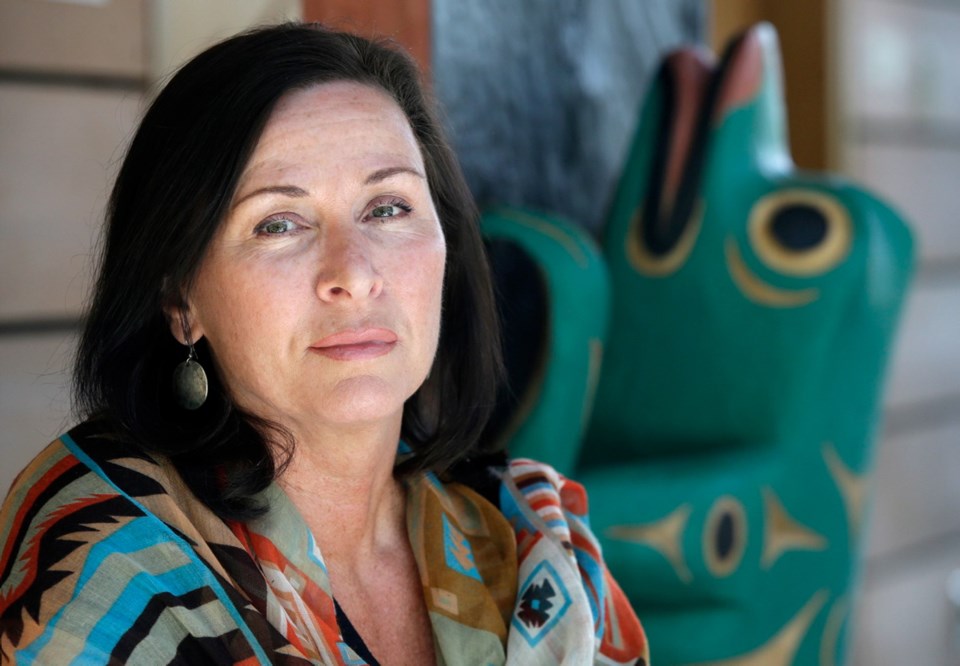Aboriginal people are more likely to contract HIV, become infected younger, receive treatment later and die sooner than other British Columbians, says the B.C. Ministry of Health.
Aboriginal communities often struggle with problems that make both prevention of HIV infections and accessing treatment difficult, said Dr. Dee Hoyano, Vancouver Island Health Authority medical health officer.
“We know aboriginal people are disproportionately more affected by HIV,” she said.
First Nations members on Vancouver Island make up 5.8 per cent of the population, but account for 11 per cent of HIV cases.
Social marginalization, substance abuse, intravenous-drug use and exposure to sexual assault are all risk factors for aboriginals, Hoyano said. Unlike the rest of the HIV-positive population, men having sex with men is the lowest means of transmission among aboriginals.
First Nations are Canada’s most vulnerable citizens and their HIV plight is complicated by the fact that responsibility for their health care is shared by federal and provincial governments, said Libby Davies, an NDP MP from Vancouver, who is federal Opposition health critic.
“HIV/AIDS in the aboriginal community is a very serious issue, but this is something the federal government has direct responsibility for in terms of aboriginal people on reserves,” she said.
The Tripartite First Nations Health Plan, negotiated in 2006 by the First Nations Leadership Council and the B.C. and federal governments, identified HIV/AIDS as a priority, according to the provincial Health Ministry. Regional health authorities, including the Vancouver Island Health Authority, are working with community organizations and the First Nations Health Authority to improve HIV-related health outcomes in the province.
What’s needed is a national HIV/AIDS strategy for aboriginal people, said Charlotte Reading, the director of the University of Victoria’s Centre for Aboriginal Health Research. Reading recently received $1.5 million to help establish a national aboriginal HIV research centre.
“We are such a high-risk population. The burden of illness is so much higher,” said Reading, who is First Nations. She is part of the new HIV centre’s 17-member leadership team, 12 of whom are of aboriginal descent.
The root cause of much aboriginal HIV is trauma, she said. “It’s not IV drug use, it’s not sex work.”
Most aboriginals with HIV have been traumatized in one way or another, whether it’s through the foster-care system or inter-generational fallout from residential schools, Reading said.
In most Canadian communities, men who have sex with men are the top risk group for developing HIV/AIDS, but in First Nations communities, those at highest risk are young women, says deputy provincial health officer Evan Adams.
“The initial thought was that aboriginal women had something about their biology that put them at risk,” said Adams, a member of Sliammon First Nation.
But, that theory was scuttled after it was found indigenous populations around the world were more at risk of contracting communicable diseases even though there is no common biology.
“What we do have is social risk. Poor aboriginal women are way more socially vulnerable to HIV,” Adams said.
Risk factors include poverty, sexual exploitation, chronic disease and violence, he said.
“They just don’t have the same opportunity as others. Everyone likes to think we are all born equal, but there is a lot more that the system can do to help women at risk,” he said.
The majority of new infections among B.C. aboriginals occur in intravenous-drug users who are also involved in sex work, mostly on Vancouver’s downtown Eastside. Aboriginal women with HIV are frequently homeless or living in desperate straits, making interaction with health-care providers stressful.
They may feel a “lack of cultural safety” and judged by the assumptions about what led them to become HIV positive, Reading said.
“We definitely need more research money,” she said.
“Outside the injection-drug-using population and people in desperate situations, we don’t really know a lot about what’s promoting transmission or what’s inhibiting people from health-promoting or safe-sex practice or safe practices.”
Even aboriginal people who carefully follow anti-retroviral treatment still die earlier than non-aboriginals because of social conditions such as poverty, she said.
Over the next three years, the aboriginal HIV centre is getting $1.1 million for a cross-Canada study of parents and children who are HIV-positive. The money is meant to identify aboriginal-specific solutions that may come out of storytelling circles or a gathering of affected families.
Reading said that many aboriginal people are not comfortable with top-down medical edicts due to the legacy of colonialism and the need for “long-standing, trustful” relationships that take in communities, not just individuals.
Strategies include treating infected people early — for their own health, and to prevent spread of the disease — and normalizing testing, by including it in general medical checkups.
Adams said, “Any aboriginal person should be able to get an HIV test without being deemed at risk. If we say it is a normal part of screening we will catch everyone as soon as possible.”
“It’s working pretty well.”



